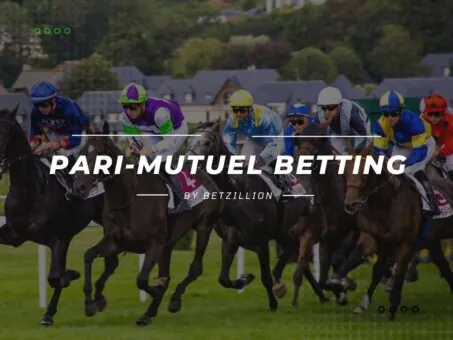Win, Place, Show Betting Explained

This simple bet is among the most commonly placed on horse races. This one keeps things simple, unlike all the exotic wagers such as the Trifecta, Quinella, Superfecta, or Lucky 15. With this stake, you’re betting on a horse to win the race or place in a specific order effectively.
- Win: choose a horse that you think will win the race
- Place: your selection must finish in the top 2
- Show: bet on a show, and your horse needs to finish in the top 3 positions
One could say that this is the horse racing betting version of 1×2, and they’re mostly right. These bets are similar in significance, although different at their core.
With a win, place, show bet, you’re more likely to get something back for your wager, even if the odds are small to make a big difference. Plus, it’s the most straightforward horse racing bet and perfect for beginners.
How Does a Win, Place, Show Betting Work?
As mentioned earlier, this type of horse race bet can be broken down into 3 different components. Each of them plays a significant role in your returns and the takeout. Of course, it will only be as successful as your picks, so choose your runners carefully.
You can pick the winner of the race, a horse that comes first or second, and a horse that must be within the top 3. Of course, the win, place, and show odds for each component will be different, which is why we recommend carefully picking your runners.
You might pick a heavy favourite for the race as your winner and an underdog to show. You could try endless combinations, depending on what you’d like to get in return.
Types of Win, Place, and Show Bets
There are several win, place, and show bet types you can try out, and we’ve broken them in depth below. If you’ve never tried this type of wager, we recommend reading our guide in detail to get the most out of your money.
Win Bet
It is the most straightforward part of this bet. You’ll find it available right off the wager at horse racing bookies, allowing you to pick the runner you believe will pass the finish line first. Online bookmakers will likely list the horses by their odds. As expected, the favourite is on top, while the runners who aren’t that likely to win are under him.
Of course, favourites don’t always win their races. Surprises are common in horse betting, mainly due to injuries that can throw your plans in turmoil right before the race.
That’s why the horse betting win, place, show type of wager requires research, especially if you plan on gambling on all 3 components. Check the favourite’s form, any injuries lately, and who will ride it. The jockey is a big part of the equation many punters ignore, but he’s the key to a horse winning the race.
Make your pick by clicking on the odds to place a winning bet. Enter the stake, and the first part of this bet is done.
Place Bet
The place wager is a bit more confusing than the win part. It’s pretty different from what football betting offers. With a place stake, you’re putting your money on a horse to finish first or second. It doesn’t matter which place he’s in as long as he finishes as a winner or a runner-up. It is a more ‘secure’ bet than a straight winner, but the returns are also lower.
You don’t need a calculator to realize that this bet gives you much better chances than a win bet. The win, place, show payouts decrease from the top down as you’re betting on a runner to finish in the top spots rather than picking him out to win the race.
Show Bet
Like a place wager, a show bet means choosing a horse to finish in the top 3. Naturally, it has the lowest odds of the bunch but gives you better chances to win. It doesn’t matter if your horse finishes first, second, or third. You can easily pick a favourite and win with a show bet, even if he surprisingly doesn’t pass the finish line first.
Across the Board
Do you want to combine the win, place, and show bet on one ticket? You can then put your money on an Across the Board bet. Of course, with this wager, you’ll pay 3 times more than what you were planning to in the first place. For example, if you plan to bet $2 on win, you’ll pay $6 as it covers all 3 potential outcomes.
The good news is that new bookies online have automated this process, so you won’t need to put money on each. Choose Across the Board, pick your horses, and enter the stake.
If your horse wins the race with this combined bet, you get paid on all 3 parts. If it finishes second, you lose the win wager and get paid for the place and show. If your pick ends up third, you only get paid for the show part of the win, place, show bet.
Handicapping Horses for Win, Place, and Show Wagering
Win, place, show betting makes it easier for you to handicap horses. Since you’re relying on a few horses, plenty of variables can destroy your strategy. If you only choose one horse, you can win much better.
Successful handicappers know every detail about the horses before they even set out to bet on them. Regardless of placing a win, place, show bet, or Across the Board, handicapping your choices will probably help you make a better decision.
Win, Place, and Show Betting Strategies
Now that you know the win, place, and show meaning, it’s time to develop a strategy that can bring the cash. Of course, take that with a pinch of salt. Even with a reasonable bet such as this one, winning is not guaranteed. Horses can fail just like your team can fail in a match. There’s no guarantee that you’ll win any bets, but a strategy is still good when wagering on horse races.
The simplicity of the bet itself means that you shouldn’t expect massive returns. Compared to exotic horse racing bets or multi-bets, the win, place, and show pays less. That’s why it’s so important to find value wagers. You should always look for value in sports betting, not just with this bet. It determines your payouts, and since all horse racing sportsbooks have different odds on runners, you might find better value at one over another.
Before you even think about placing a win, place, show bet, you should do your research. Don’t be ashamed of taking notes. The pros take notes of each horse that they believe will run a great race. They note their recent form, if there have been any injuries, and pay close attention to the morning lines and expected odds. You should also check the tote board to stay up to speed if there’s any action.
If the odds on your horse are higher than expected, it’s clear what you need to do. You can devise a solid strategy for your runner if you think he’ll perform well. Instead of sticking with the same wager for all 3 parts, you can bump them up to double or triple. Say, $2 on the run, $4 on place, and $8 on show. Of course, the odds are key in developing a betting strategy, as shorter prices will give better returns on wins only.
You should stick to the place and show if the price is higher. The key to this strategy is to find a fair or valuable price and optimize your bets, so they all but guarantee a return.
Win, Place, and Show Payouts
Win, place, show betting is pretty easy to calculate nowadays. Legal bookies have built-in calculators that do the work for you. Select the bet, enter your stake for all parts or each of them separately, and you’ll get an instant return. That’s the gist of how to bet win, place, and show, but it was a bit more complicated in the past.
You can still do the calculations on your own. Of course, you’ll need to know the odds before doing any math. If you’re betting Across the Board, the payouts will be:
- Your runner wins – full win place show payout
- Your runner comes second – place and show payout
- The horse comes third – show payout
Knowing the odds, you can calculate the expected returns quickly. However, as we mentioned, that’s not necessary since bookies have instant calculators.
When Should You Place a Win, Place, and Show Bet
Win, place, and show bets are great if you think an underdog can win the race. Or you have another underdog that can surprise and finish 2nd or 3rd. It’s a low-risk wager compared to other bets, although it also comes with a lower cut.
Of course, if you find value bets with higher odds than what you expect, it’s a lock. Putting money on all 3 bets can still deliver solid returns with the right horses, but you’ll need to research and use a good strategy.
We hope our guide on how to bet on horses win, place, and show told you everything you need to know for this wager. It may not be an exotic that can pay millions, but it’s great for beginners and bettors who use a strategy.
Frequently Asked Questions
-
Is win, place, and show a good bet?Yes, it is, although it pays lower than other bet types. It’s great for beginners and punters who like betting with a strategy instead of hunching.
-
What is a win, place, and show in horse racing?Win, place, and show betting is one of the most straightforward bet types in horse racing. It allows you to pick the winning horse or others that end up second or third. You can either bet on each one separately or go Across the Board and wager on them all.
-
How much is a $2 win, place, and show bet?If you go Across the Board, a $2 win, place, and show bet will cost $6. That’s $2 for each of the 3 options.
-
How are win, place, and show bets calculated?Calculations for this bet are done automatically at bookies. If your horse wins, you get paid on the win bet to make things simpler. If it finishes second, you get paid for the place and show. Should your horse finish third, you only get paid on the show part.
-
Still have questions?
Ask our experts
Related articles
Futures Betting
Treble Bet Explained






